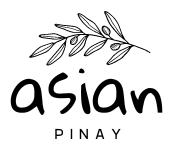Exploring the Identity of Asian Pinay: Navigating Culture and Representation
Introduction
In the diverse tapestry of Asian identities, “Asian Pinay” stands as a significant term, encapsulating the cultural richness and unique heritage of Filipino women within the broader Asian context. This article delves into what it means to be “Asian Pinay,” examining the cultural diversity of Asia, the historical and social contexts shaping Filipino identity, challenges of representation, personal stories, and the contributions of Filipinos to Asian culture.
1. Understanding “Asian Pinay”
To grasp the term “Asian Pinay,” it’s essential to break down its components. “Asian” refers to individuals from the continent of Asia, encompassing a vast array of ethnicities and cultures. “Pinay” is derived from “Filipina,” specifically identifying women from the Philippines. Together, “Asian Pinay” highlights Filipino women within the larger Asian diaspora, acknowledging their cultural identity and heritage.
2. The Cultural Diversity of Asia and the Philippines
Asia is a mosaic of cultures, languages, and traditions. The Philippines, located in Southeast Asia, boasts a rich tapestry of indigenous, Spanish, and American influences. Filipino culture is characterized by vibrant festivals like Sinulog and Pahiyas, traditional dances such as Tinikling, and culinary delights like adobo and balut. These elements contribute uniquely to the broader Asian cultural landscape.
3. Historical and Social Context
The history of the Philippines is marked by a blend of indigenous, Malay, Chinese, Spanish, and American influences. Spanish colonization from the 16th to 19th centuries left a lasting imprint on Filipino culture, religion, and language. The Philippines’ strategic location in Southeast Asia has fostered trade, migration, and cultural exchanges with neighboring countries, shaping Filipino identity within the Asian sphere.
4. Identity and Representation
Representation is crucial in shaping how “Asian Pinay” individuals are perceived and understood. Historically, stereotypes have often portrayed Filipinos in limited or exoticized roles. Challenges persist in media representation, with efforts underway to promote more accurate and diverse portrayals of Filipino women in Asian and global contexts. This inclusivity fosters a deeper appreciation for the complexities of Filipino identity.
5. Personal Stories and Experiences
Personal narratives provide insight into the lived experiences of “Asian Pinay” individuals. For many, navigating dual identities—being Filipino and Asian—comes with challenges of cultural assimilation, language preservation, and confronting stereotypes. Personal anecdotes illustrate resilience, pride in cultural heritage, and efforts to celebrate Filipino traditions while embracing their place within the larger Asian community.
6. Cultural Contributions
Filipinos have made significant cultural contributions to Asia and beyond. Filipino cuisine, with its blend of flavors and influences, has gained international acclaim. Music genres like OPM (Original Pilipino Music) showcase Filipino creativity and expression. Arts, such as the vibrant festivals and traditional crafts, highlight the Philippines’ artistic prowess and cultural diversity, enriching the fabric of Asian culture.
7. Challenges and Stereotypes
Despite cultural richness, “Asian Pinay” individuals face stereotypes that reduce their identity to caricatures or misconceptions. Stereotypes of Filipinos as domestic workers or entertainers overlook their diverse professions, talents, and contributions to society. Addressing stereotypes involves promoting nuanced understanding and challenging harmful perceptions, fostering inclusivity and respect within the Asian community.
8. Looking Forward: Embracing Diversity
Embracing diversity within the Asian community involves recognizing and celebrating the multifaceted identities of “Asian Pinay” individuals. Initiatives promoting cultural exchange, education, and representation can foster greater unity and understanding across diverse Asian identities. By amplifying voices, advocating for equitable representation, and embracing cultural pride, we can cultivate a more inclusive and vibrant Asian community for generations to come.
Conclusion
In conclusion, the term “Asian Pinay” embodies the rich cultural heritage and diverse identity of Filipino women within Asia. Understanding “Asian Pinay” involves appreciating the complexities of Filipino identity, the contributions to Asian culture, and the ongoing journey towards equitable representation and inclusion. By embracing diversity and celebrating cultural richness, we can foster a more connected and empowered Asian community worldwide.
